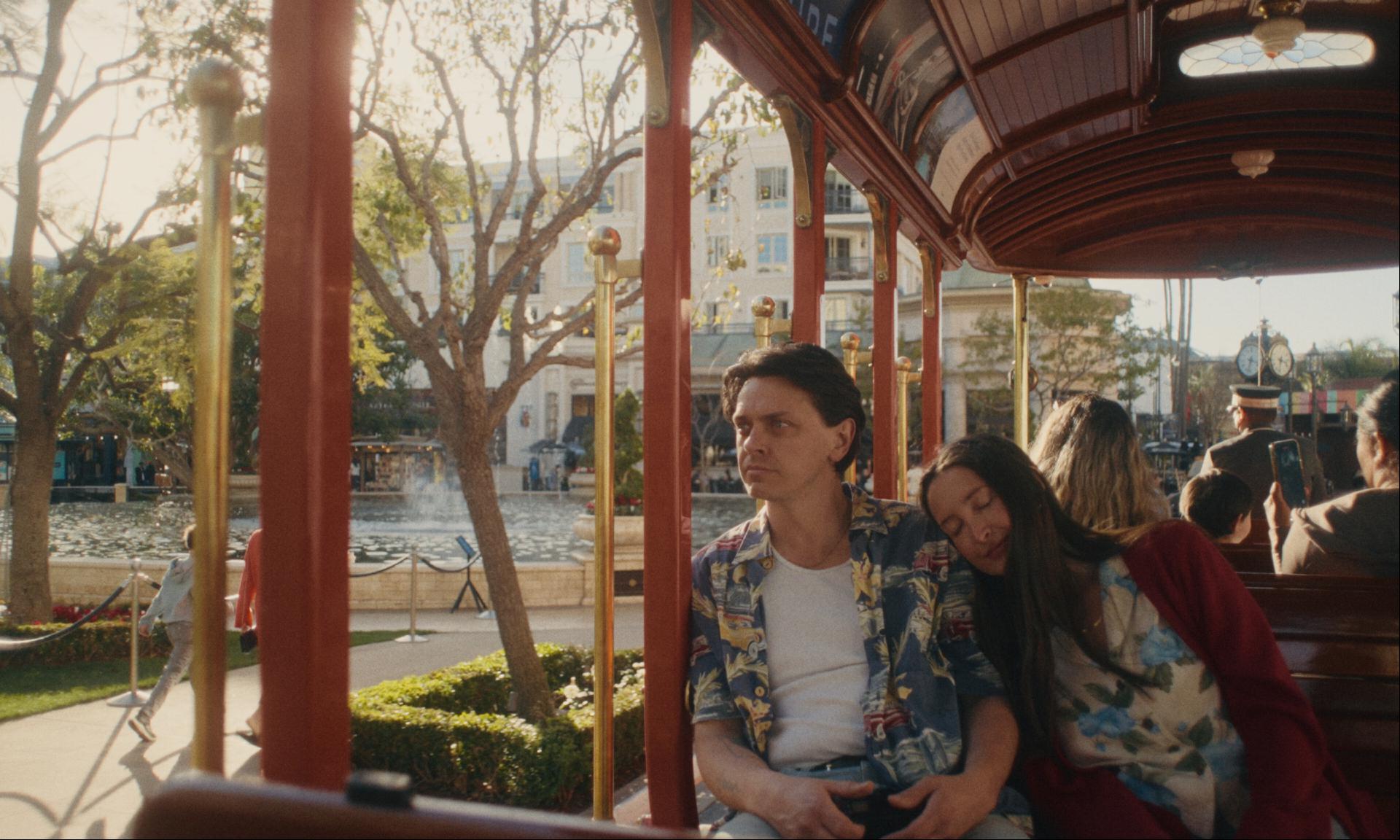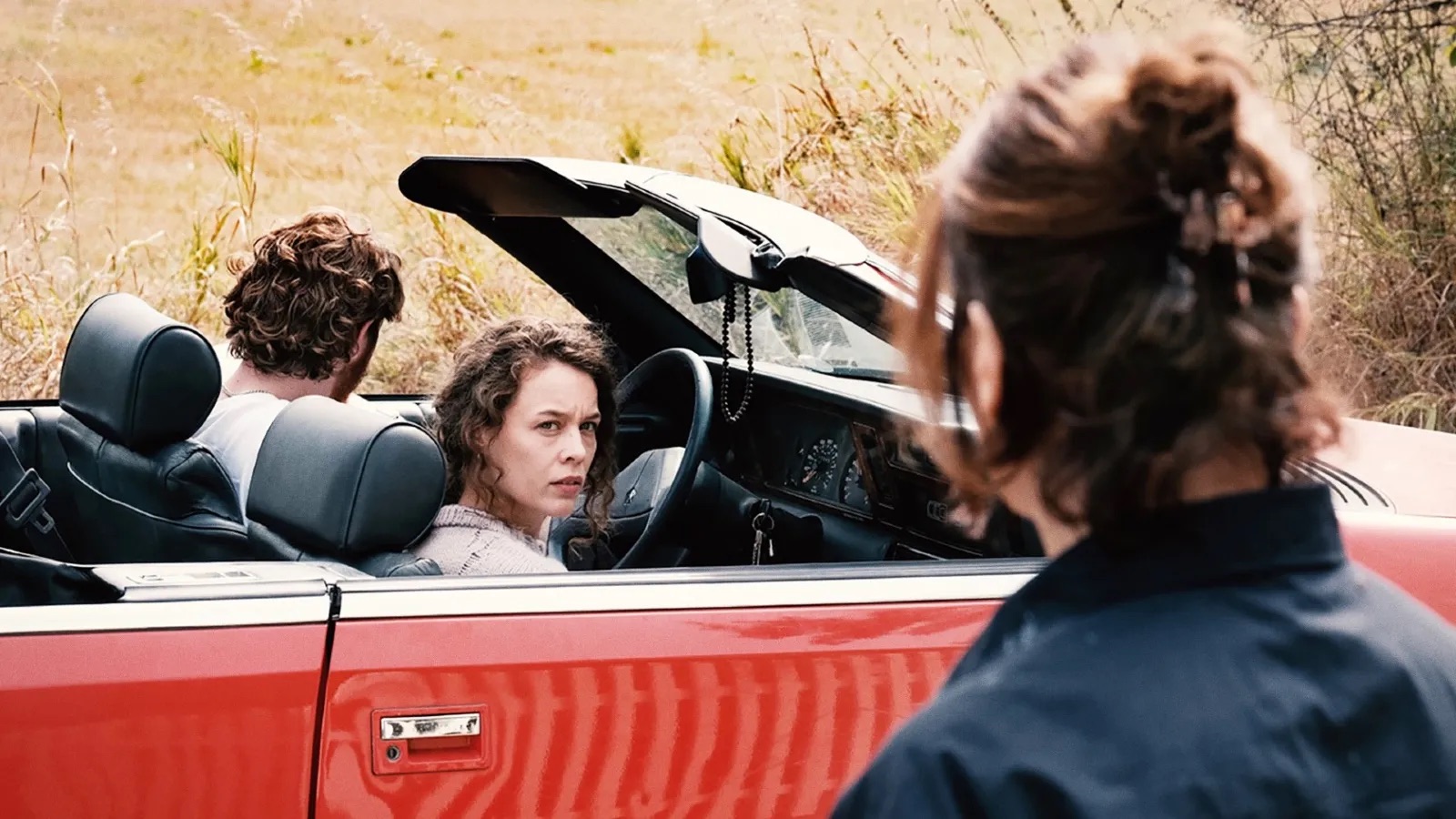VIFF Digest: Part 1
Middle Life
It feels as though getting the "meet cute" of a romantic film right is one of the hardest parts. Without being forced, or cliche, the romantic counterparts need to intertwine in some way, setting us on a path towards romance, conflict, and that's right, love. Pavan Moondi, the writer, director, editor and producer of Middle Life wisely undercuts the severity of a good meeting, subverting the lofty expectations, by having Ryan (Peter Dreimanis) and Andie (Leah Fay Goldstein) meet in the aftermath of a car accident. Ryan, speeding home because he "needs to take a piss", flips his car, while Andie happens to be at the right place and the right time. Seeing him crawling out of the vehicle, she calls for help. What's nice about Middle Life and Moondi's story is that it doesn't get bogged down by the details. The ensuing credits after the opening sequence show a whirlwind of time, who knows how long after the crash, that highlights Ryan and Andie's day to day lives. Ryan works as a plumber installing bidets, while Andie struggles in her daily life with her husband and son, particularly here Moondi's direction is tremendous. The camera works as a spying third party in Andie's home, always slightly hidden behind a wall or door, peering in on the seemingly worrisome marriage. It doesn't matter how these respective parties got into whatever rut it is that they're in, and abandoning these details makes it more believable and natural. It could be anyone of us in the middle of this exact mundanity.
Moondi's story takes off once Ryan and Andie reconnect, Ryan understandably wants to thank Andie for saving his life and that of his father who was a passenger in the car. Ryan's idiosyncratic, oddball behavior provides a light comedic feel to their budding friendship, but unfortunately the chemistry never connects with Goldstein's Andie. Dreimanis' whimsically comedic delivery simply doesn't match Goldstein's bland reading, lacking emotion and intrigue in a romantic sense. Amidst the strange, inexplicable oversharing from Ryan, leading to the film leaning on his inability to piss-a thematic element that is terribly under explored if not completely abandoned in the latter half-there's little mixing between these two performers. Story-wise Middle Life relies on a chapter structure to highlight distinct moments in Ryan and Andie's journey, but unfortunately the narrative isn't strong enough to keep it all afloat. While I just praised Moondi for not getting too caught up in the little details of the story, there seems to be little balance between moving quickly and building a strong enough foundation of these characters to really pack a punch when their whimsical trip to California takes an anxious turn. The unexamined, and sudden, trauma of Ryan's car crash and Andie's crumbling marriage are necessary developmental elements that flounders when finally revealed. Ultimately making the relationship of Ryan and Andie more of a frustrating head-scratcher than that of two wandering souls finding solace with one another. That being said, there's something to enjoy about the colorful aesthetics of the film and its bright persona, providing a nice, bubblegum pop feel to the budding romance. Combined with Ben Fox's delightfully saxophone-centric score, the technical profile of Moondi's film is quite lovely. Which, in the theme of Ryan's perspective on life, feels appropriate to appreciate the little things and moments even if the whole doesn't come together.
Deathstalker
The reanimated corpse of the 1980's B-movie series, Deathstalker, isn't thanks to Nekromemnon-more on this soon-but to Steven Kostanski who's known more for his FX wizardry than his writing/directing chops. Well, I should also mention that Slash, yes Slash, is also to thank for his role as an executive producer along with creating the heavy metal anthem for the titular hero. Spoiler alert, it rips. Regardless of who's responsible for this revival, Deathstalker in its new modern form is just as metal and ridiculous, filled with campy extravaganzas, as its 80's predecessors, which is its gift and curse. The story matches the originals' opacity and outlandishness, taking place in the Kingdom of Abraxeon which is under siege from the Dreadites, an army of undead warriors at the behest of the evil sorcerer, Nekromemnon (Nicholas Rice). As Deathstalker (Daniel Bernhardt) scavenges the battlefields, he unknowingly takes a cursed amulet which sets in motion the fantastical journey that spins completely out of control, but is undeniably entertaining.
Kostanski's dedication to practical effects including but not limited to makeup, prosthetics, animatronic demons and animals, and no shortage of flowing and/or spraying blood gives Deathstalker a proper feel for an 80's revival. Combined with how unserious the film takes itself, delivering extraordinary camp vibes at every turn, Kostanski isn't making a modern Deathstalker that necessarily belongs in 2025, but a reimagining of the original that looks infinitely better. Especially when factoring in the crowd-funded budget. This refurbished approach works incredibly well, for the most part. Hilarious one-liners or ridiculous tropes, the old wise man at the Inn smoking a pipe while reciting the entire history of Deathstalker as a prime example, provide a fun comedic feel, juxtaposed with the river of blood and gore creates an exciting aesthetic that immediately grabs you. But as the story continues to fold in upon itself, introducing new exposition and zany characters or places at every impediment the hero faces, the film gets exponentially more difficult to comprehend. The argument could be made that the nonsensical story is a direct influence of the discombobulated narrative of the original film, but when influence becomes imitation you can't help but struggle to separate the two. Pulling in various parts of The Lord of the Rings (the scene of the hobbits hiding in the tree under the Nazgûl is recreated twice in the same few minutes), Star Wars with Deathstalker piggybacking a small sorcerer named Doodad (Patton Oswalt) invoking Luke Skywalker and Yoda imagery, or Conan the Barbarian with Deathstalker's appearance, are all fun callbacks that have varying appeal. But as the swords keep swinging, foes are vanquished, often providing anticlimactic comedy more than thrilling action, the camp becomes exhausting more than exhilarating.
There's also something to be said about the subversion of the film, primarily rivaling the sexual violence present in the originals, whereas the new film undercuts the very apparent masculine sensibilities by having the resolution revolve around a nice hug with a swamp monster. Bernhardt proves to be a proper vehicle for the gruff, battle-weary hero, playing the titular role with an air of ease. His exasperated and sardonic warrior persona mirrors the ever-increasing stakes of the world diving into darkness with comedic relief and the unserious undercutting that prevents the film from fully imploding. As far as reboots go, especially concerning cult favorites, Deathstalker is a middle of the road modernization that gets the ball rolling, but down the same path. A more refined story that didn't find itself in the same pitfalls as the original could've elevated the campy outrage, creating an all new modern classic.
Miroirs No. 3
Christian Petzold returns with another slow-burn, minimalist drama in Miroirs No. 3, examining the differing processes of grief between those ridden with it, and the choices we make to cope. After a car accident that kills her boyfriend, Laura (Paula Beer) asks to stay with Betty (Barbara Auer), the woman who pulls her from the wreckage. While Laura isn't physically hurt from the crash, there's clearly something wrong, whether it's trauma or grief from the accident or the death of her boyfriend is unclear, especially when getting a glimpse of her behavior prior to the couple's trip. Her silent trip to a river, where she sees a man in all black paddle boarding, something I couldn't help but compare to Charon the ferryman of the Greek underworld, or her emotional and mental distance from her boyfriend create an enigmatic atmosphere that powers Petzold's slow-moving and methodical story. Once Laura and Betty get closer, and you get over the odd circumstances that have brought them together-something I don't think I ever did-Miroirs No. 3 takes a little more shape. Betty introduces Laura to her husband Richard (Matthias Brandt) and son Max (Enno Trebs), the vague tension between the three family members hinting at some sort of missing piece. This becomes abundantly clear the first time you hear the name "Yelena", yielding some explanation to Betty's maternal attachment to Laura after her accident, and the men's hesitation to fully give into this replacement. Additionally, Richard and Max may be operating as criminals on the side, jamming car GPS signals as Max relays to Laura, and Betty's recent completion of a pill regiment, whether by choice or medically, adds fuel to the perplexing fire. The answers to all these strange questions are never given, certainly not out in the open that is, and the mysterious fog enrapturing the four characters is Petzold's thought experiment personified. How and why do we move forward through the grieving process? Petzold doesn't know the answer, neither do his characters, and certainly not us the viewer.
However, with how minimal Miroir's No. 3 is, I found it difficult to stay completely attached to Petzold's approach. It is, after all, hard to get full when you're just eating scraps. The continued layering of more and more mystery isn't an unwelcome level of complexity, but obfuscated the original thesis statement more than magnified it. An air of violence across the men, or even Betty's psychological state reflecting a teetering of violent outbursts yields strong stakes, but I wasn't buying Laura's inability to escape her environment or her lack of agency in being there in the first place. It wasn't suspenseful enough to be fun, and not fun enough to be suspenseful.
That being said, Miroirs No. 3 is a tremendous film technically. Petzold's frequent collaborator Hans Fromm's cinematography is stunning, balancing the light of the countryside delicately across the fractured characters. Not to mention the musicality of the film, named after a composition by Maurice Ravel along with Laura being a piano student adds a level of dimensionality that brings lovely emotional components especially in the third act. So while I don't believe Petzold's minimalism paired well with his bread crumbed story, it was still a wonderful exercise in grief and another slow burn drama that is the writer/director's bread and butter.








![Deathstalker [2025]](https://images.ctfassets.net/f4exvld7r7c2/1WCb0oimXkJu5EmOSbkbCq/d596a3fd8ed6ba850992a9c315394dc1/deathstalker.jpg)





